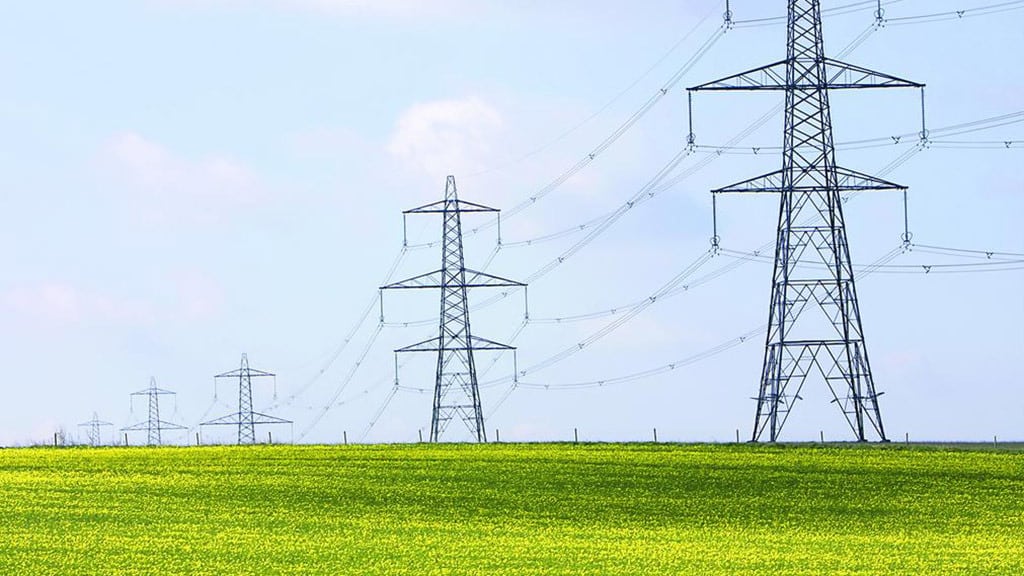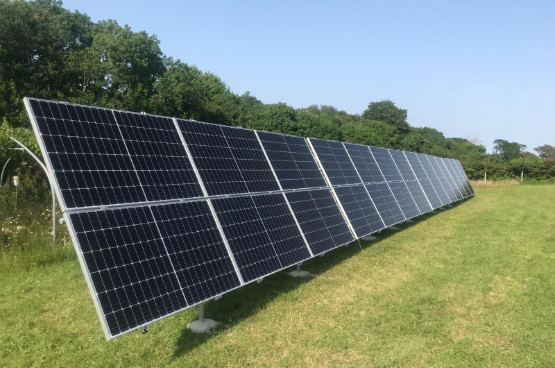Updated 27.03.25
So, what happens when you have solar PV?
In the summer (and particularly sunny days in the winter) you probably won’t be able to consume all of the energy generated by your PV system. Supply will probably be greater than demand (unless you have a battery, EV or Eddi). An average UK household with a good-sized PV system can expect to consume about 50% of the annual electricity generated from the solar PV.
So, where does the rest go? It will be fed back into the electricity grid and consumed elsewhere.
You are essentially donating your surplus solar energy to an energy supplier, who sells it on for a profit. That isn’t at all fair, is it?
You probably think that you should get reimbursed for that energy you just donated to the grid. Well, you are correct. The Smart Export Guarantee (SEG) is a system that allows you to get paid for every unit that gets fed into the grid, from your solar PV system.
The Feed-in-Tarrifs (FiT)
You might have heard of the term ‘FiT’ or ‘Feed-in-Tariff’ when reading about or discussing solar PV. The FiT, which began in April 2010, was a government programme that incentivised homeowners and businesses to install solar PV (and other energy generating technologies) at their properties.
The initial FiT rates were really good. In 2010 you could get as much as 55.36p per kWh. Those who installed systems under this agreement will have entered into 20 year contracts, so will still receive these payments for many more years.
However, as the solar PV industry rapidly grew, the government decided to throw less and less subsidies at it. The FiT rates were gradually decreased each year. Between January and March 2019, the best FiT rate was 4.12p per kWh – a 92.6% reduction since its establishment in 2010.
Then, in April 2019, it was removed altogether. No more FiT for new solar PV installations. No more financial benefit for surplus solar PV fed back to the grid.
The government argued that the solar industry was now strong enough to stand on its own two feet – without the help of government subsidies. Fair enough – the cost of installing solar PV has come crashing down. But, what about the people who own solar PV systems? They have no choice but to donate their surplus solar energy to big energy companies. Not OK.
The solution to this problem is the SEG.
What is the SEG?
The SEG was introduced in January 2020 by the government to replace the old Feed in Tariff. The idea is that rather than the government subsidising solar PV owners, the energy
companies buy the surplus energy from the customer instead. Each energy company can set their own SEG rates, creating a competitive market. As a new solar PV owner, you can
shop around and find the best SEG rate. It became a legal obligation for energy suppliers, with a customer base of 150,000 or more, it became a legal obligation for energy suppliers, with a customer base of 150,000 or more, to offer a SEG to their customers, as of January 2020
How Does the SEG Work?
Once you have solar panels installed, your system will generate electricity during daylight hours, which is typically when you will consume it in your home. However, when your system produces more electricity than you need, that excess energy can be exported to the National Grid.
Under the SEG scheme, energy suppliers are required to offer tariffs to homeowners for the electricity they export. These tariffs can vary between suppliers and may differ based on factors such as the type of technology used, the amount of energy generated, and the contract terms.
To take part in SEG, you’ll need to have a smart meter installed, which helps track the amount of energy you’re exporting. Once registered, your energy supplier will credit you based on the amount of excess energy exported to the grid, typically on a monthly or quarterly basis.
How do I access the SEG?
There are only two things you need.
- A smart meter. As mentioned in the previous sections, a smart meter is required in order to measure your energy export. This is a free service offered by the majority of energy providers. It can take a while to get a smart meter fitted, so it’s worth acting quickly and booking yours ASAP. This way you won’t lose out on any future SEG payments. Your energy supplier might not offer smart meters, in which case we would recommend switching to one that does
- An MCS certificate for your solar PV installation. SunGift carry out all of our installations to MCS standards and supply the MCS registration as part of our service. The certificate will be sent to you shortly after your installation
The SEG rules also state that your total installed capacity of solar PV is less than 5MW (megawatts). That’s about 16,000 solar panels. So unless you’re installing a 5MW solar farm, you should be fine.
How Much can Homeowners Earn from the SEG?
Energy suppliers can choose to set their own SEG rates. Hopefully this will encourage customers to pick the best one and start a competitive market between the suppliers. Most suppliers are offering a fixed rate SEG, but a few are rolling out a flexible rate SEG – more about that later.
The table below shows the current SEG rates offered from energy suppliers at the time of writing (May 2020).
The terms and conditions for each tariff vary greatly, so it’s very important you research your SEG and pick the right one for you. For example, the highest payer is Social Energy at 5.6p/kWh. However, to benefit from this, you need to sign up to their battery scheme, something that we can’t recommend doing due to their track record of poor quality battery installations.
Other ways the tariffs might vary is in their length. Some will offer you a fixed rate for 12 months – great, whilst others will be subject to change at any point – potentially problematic. Some will pay you monthly for your exports, like Octopus, whilst others, like SSE, will only pay you once per year. Some of the tariffs will allow you to install a battery alongside your solar PV, but others such as EDF and Shell won’t allow it.
|
Energy Supplier |
Tariff rate (p/kWh) | Tariff type | Tariff length | Payment cycle |
Allows battery storage? |
|
Social Energy |
5.6 | Currently fixed | No fixed end date | 3 months | Yes (must be SE battery) |
|
Octopus Energy |
5.5 | Fixed | 12-months | Monthly |
Yes |
| E.ON Energy | 5.5 | Fixed | 12-months | Unknown |
Unknown |
|
Bulb |
5.38 | Fixed | No fixed end date | 3 months |
Yes |
|
So Energy* |
5 | Fixed | 12-months | Monthly |
Unknown |
|
Ovo Energy |
4 | Fixed | 12-months | 3 months |
Case-by-case basis |
|
Scottish Power |
4 | Currently fixed | No fixed end date | 6 months |
Unknown |
|
Green Network Energy |
3.5 | Currently Fixed | No fixed end date | Quarterly | No |
| SSE | 3.5 | Fixed | No fixed end date | 12 months |
Case-by-case basis |
|
EDF Energy |
3.5 | Fixed | 12-months | 3 months |
No |
|
Shell |
3.5 |
Currently fixed | No fixed end date | 12 months |
Unknown |
|
E.ON Energy |
3 | Fixed | 12-months | Unknown |
Unknown |
|
Utilita |
3 | Unknown | Unknown | Unknown |
Unknown |
|
Utility Warehouse |
2 | Fixed | No fixed end date | Quarterly |
No |
| British Gas | 1.5 | Currently fixed | No fixed end date | 6 months |
Yes |
Data source – Solar Trade Association – https://www.solar-trade.org.uk/seg/ – the table on the Solar Trade website is kept up to date, so check back regularly for any changed.
*So Energy are not included in Solar Trade’s table, however I have included them as their website shows they offer a SEG. They are currently unable to fit smart meters themselves, but claim to offer this service very soon.
What is a ‘variable’ SEG tariff?
The table above shows the tariffs with a fixed price per kWh exported. This is good for security – you have a guaranteed payment rate for your exports.
However, we expect variable tariffs will become increasingly popular as the SEG develops. A variable SEG tariff is one that has no fixed payment rate for your exported energy, instead the rate will fluctuate based on the wholesale electricity prices of the grid.
The best example of this at the moment, is Octopus Energy’s ‘Outgoing Agile’ variable SEG tariff. Octopus look ahead to the next day’s electricity wholesale prices, then give you half-hourly export prices for that day. The amount you get paid for exporting electricity will depend on the supply and demand on the electricity grid. If there is an abundance of renewable energy being generated in the middle of a sunny and windy day, then your export price will be low. Alternatively, on a cloudy and still day, your export price will be high.
If you can export during ‘peak’ demand times on the grid (typically in the morning when people start waking up and in the evening when people come home from work) then this is when you will receive the highest rate. From the energy utility’s perspective, it makes much more sense to buy surplus green energy from you, than to fire up a gas or coal station (an expensive, polluting and inefficient process), to meet peak energy demand.
But, are you likely to actually have any surplus energy to export during the times of peak demand? With solar PV alone, probably not. In the morning and evening, you’ll probably need to use most of the generated energy yourself. This is where battery storage comes in.
Being able to store surplus solar PV from the middle of the day – when generation is peaking but demand is low – gives you the power to discharge that energy back to the grid in times of short supply. This results in two main benefits.
- With a variable rate SEG, being able to pick and choose when to export your surplus solar PV energy means you can maximise the revenue you get from your exported energy. Octopus also claims that, ‘With an average of 6 Octopus Energy customers per square mile across Britain, we can sell your energy to your neighbour, enabling the first ever mass peer-to-peer energy trading in this country’
- You are providing the electricity grid with a source of renewable power during times of peak demand. A big part of the green energy revolution includes reducing the peak demand on the grid. It’s during these times that gas and sometimes coal fired power stations are switched on in order to meet demand (they will otherwise remain idle for most of the year)
Conclusions on the SEG
So, is the SEG any good?
Overall, the SEG is a good thing and the best rates (5p/kWh and upwards) offer solar PV owners a fair rate for their exports. However, if you want your solar PV system to pay for itself as quickly as possible, the SEG should be your second priority.
It costs on average about 15p/kWh to import energy from the grid, but the best SEG tariff is 5.5p/kWh. Each time you use one kWh of electricity, generated from your solar PV, you are saving 15p. If that kWh had been exported to the grid you might have only been paid a maximum of 5.5p for it.
Your top priority should be to try and use as much of your generated solar PV energy as you can. There are lots of options for this.
Firstly, you can try to shift your usage patterns. For example, putting washing machines and dishwashers on timers so they come on in the middle of the day when solar PV energy generation is peaking. You could also look into smart plugs, a way of remotely controlling your household appliances.
Secondly, look for ways to store your surplus energy. SunGift offers three fantastic solutions for this – Immersion diversion, home batteries and solar EV charging.
Immersion diversion devices (we always recommend the Eddi, made in Britain by MyEnergi) divert any surplus energy from your solar PV into an immersion heater in your water tank. Throughout the summer months you can expect to see a significant amount of your water heating covered by this surplus.
Home batteries, like the Tesla Powerwall, are another great way of storing your surplus energy. Rather than your water tank, the energy will be stored in a lithium ion battery, which can then discharge the stored energy into your house at night time.
Solar EV chargers, like the Zappi, let you store your surplus solar PV energy in your electric car battery. This means you can drive for free on renewable energy. In the future we will see more of what’s known as ‘Vehicle-to-Grid’ or ‘V2G’, where your car battery will be able to discharge into your home and eventually back to the grid.
Overall, we definitely recommend signing up to the SEG. There will be times, even if you have a battery, where your PV system will still need to export back to the grid. When this happens, the SEG will kick in and ensure that you are rewarded fairly for this.

 Solar PV Contractor of the Year 2024
Solar PV Contractor of the Year 2024

